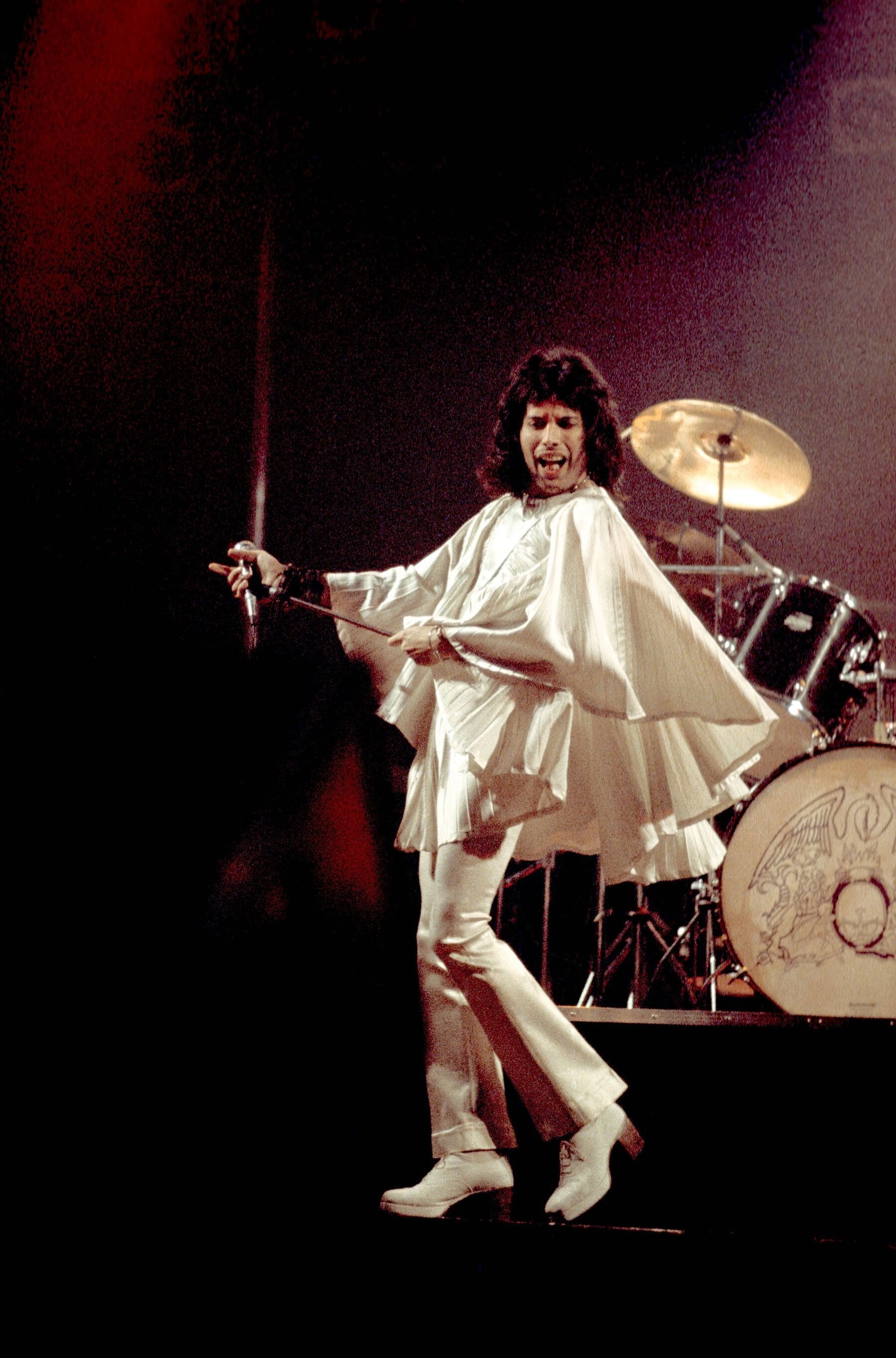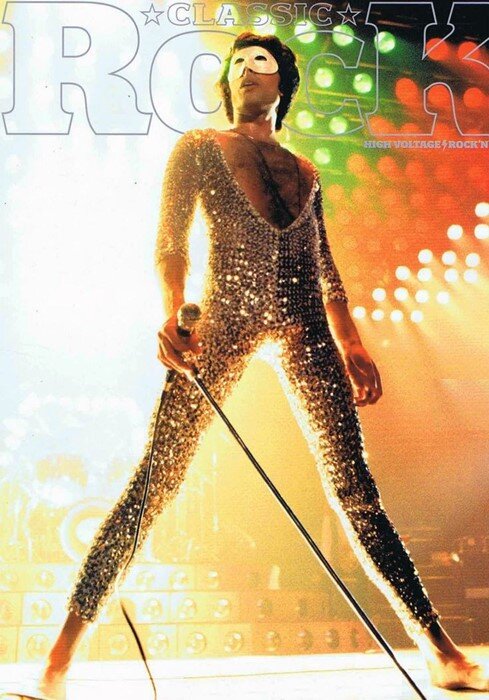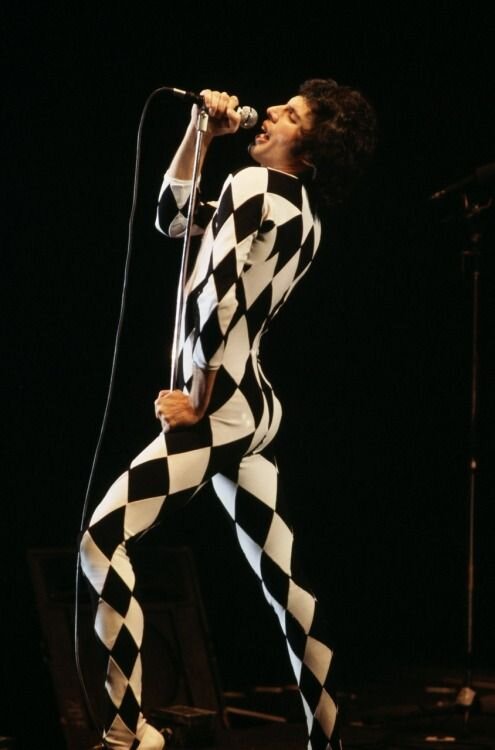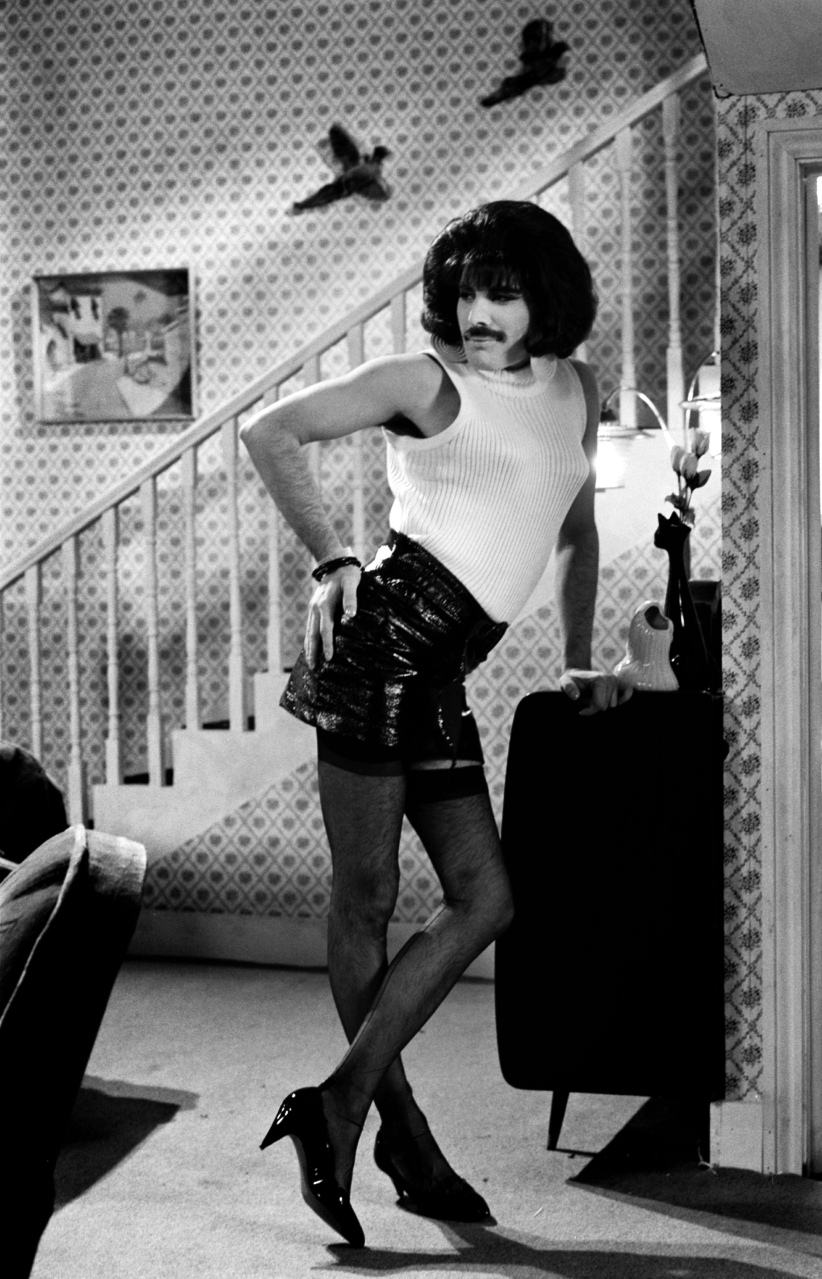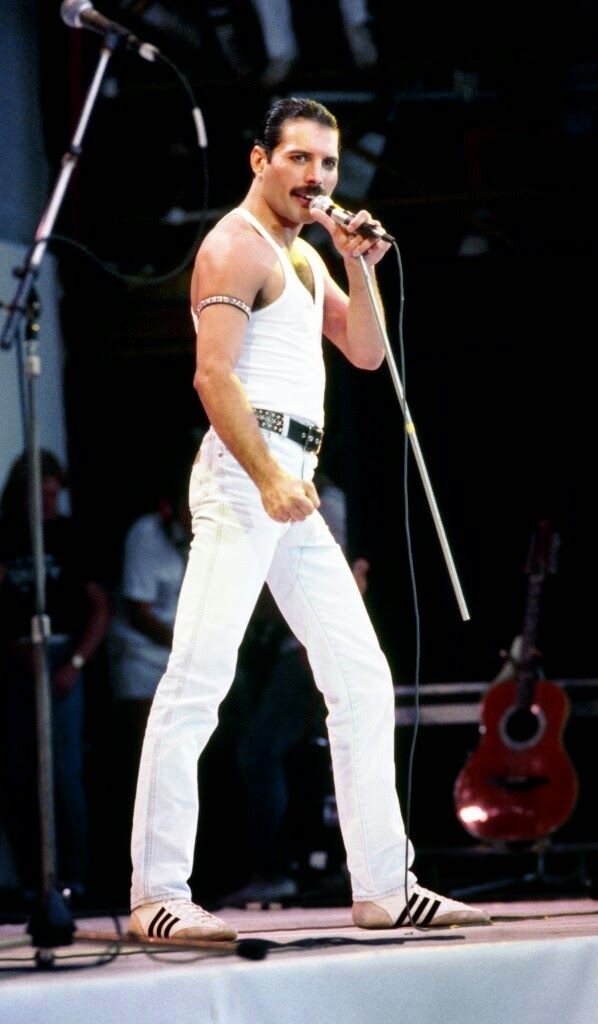Don't Stop Me Now - The Fashion of Freddie Mercury
By Hannah Schmidt-Rees
Now, time to take on a big fashion history topic; Freddie Mercury. Whilst his musical career is one of the most legendary, his fashion career is bountiful and detailed. I don’t think I can do it justice with this article, not even a Vogue article can do his legacy justice, but I’m ready to give it go. I’ll do my best.
Freddie Mercury arrived in England in the 60s, becoming a teenager as punk and hippie cultures were battling for cultural dominance and the youth of Britain were finding their own identity in the ever-changing pop culture and fashion scene. He studied graphic design and illustration at the Ealing College of the Art and befriended a number of British musicians; Ronnie Wood of the Rolling Stone and Pete Townsend of The Who.
Through his study and graduation, Mercury came into contact with his future bandmates in 1970; guitarist Brian May, drummer Roger Taylor and bassist John Deacon. In 1971, Queen had played their first gig. By 1973, they had released their first album, titled; Queen, with a follow-up album Queen II a year later in 1974. Their first sound combined aspects of ballads, metal, pop, glam rock and blues, when slowly evolved to become their signature style. With six more albums being released in the ten years following, Queen became a household name for fans all around the world, with their 1975 album A Night at the Opera becoming a worldwide hit, realising songs that are still popular to this day.
Freddie Mercury was constantly reinventing himself. He is the symbol for constant reinvention. He was a free spirit, wanting to capture the gaze of others and look good while doing it. As a singer and songwriter, Mercury’s biggest strength was being a showman. His stage presence was incredible, even without the incredible fashion, but what he choose to wear solidified his place in music history. Mercury was always a creative individual, using his skills in graphic design to create Queen’s logo and some of their album artworks. He knew what visual aspects looked good and he applied this knowledge to his fashion.
In the mid 1970s, Mercury met Mary Austin, who at the time was a salesgirl at Biba, a highly popular brand in London at the time selling the latest in 70s fashion. Mercury and Mary become a couple, with Mary and her style becoming a muse for Mercury and his now signature look. Both Mary and Mercury worked at the fashion stall in Kensington Market, giving him knowledge of fashion and what it takes to make them.
A popular music genre at this time was glam rock, which presented a very extravagant and androgynous take of rock music and rock bands. This influence, in addition to the laid-back and subtly androgynous fashion of the 70s became the foundation of Mercury’s early style. If I’m completely honest, I don’t think Freddie wanted to be or look androgynous, that wasn’t his goal. I think he just wanted to wear whatever he wanted, whatever would make him feel good on stage, and if that was viewed as androgynous, I don’t think he really cared.
One of his earliest iconic looks was a pleated satin batwing top, which he wore for their performances in the beginning of their popularity. Mercury became in contact with British designer Zandra Rhodes, who was known for creating unique womenswear pieces. In their first meeting, Mercury gravitated towards the original aforementioned piece, liking the design but wanting to make a few adjustments. Lace was removed, the neckline was altered; and the look was complete. On stage, the satin fabric glowed under the lighting, with the pleats providing texture and visual interest. The batwing silhouette showcased the excessive fabric, created exaggerated forms whenever Mercury moved across the stage. It was the perfect addition to Mercury’s stage presence, and was the beginning of some amazing fashion moments. Queen further worked with Rhodes to create a few more looks, including matching pleated looks for May and Deacon.
His love for theatrics was seen through his low cut silver sequin catsuit, paired with a white mask. Mercury knew how fashion worked, and often wore leotards and catsuits which give him the flexibility to move around on stage and give it his all. His understanding of gender norms was seen through his drag inspired pin-up look, pairing a black leather skirt, pink top, black wig and pink earrings to represent a repressed housewife. This look was for Queen’s ‘I Want To Break Free’ video, which became one of their biggest hits, while also causing a bit of a stir at the time in the United States.
As the 80s rolled around, Mercury found himself being inspired by the 1980s gay and club kid scene, which you can read about here. He wasn’t going to be restricted to his signature 1970’s fashion anymore. In addition to theatrical looks that invoked surrealism and fantasy (like for the music video for ‘It’s a Hard Life’), Mercury also referenced S&M culture with his use of leather and studded accessories. This is most seen in his performance at Live Aid in 1985, with his tight acid-wash jeans, white low cut singlet and studded arm band and belt. This style was also similar to his performance at Wembley Stadium in 1986, which combined Adidas sneakers, white pants with a red stripe, a white t-shirt and the now absolutely iconic and bright yellow military jacket. This ‘era’ of Mercury’s fashion embodied this combination and contrast of hyper-masculinity and camp, which made it so incredibly unique and one-of-a-kind. His focus on being able to move around the stage was not expressed through catsuits anymore, but subtly through Adidas boxing sneakers, which still allowed him the movement.
There are so many unique and iconic Freddie Mercury that I wouldn’t be able to mention them all in this article. I don’t think any article or recount of his fashion history will do him justice. It incomprehensible to fully breakdown or even fully understand his fashion journey, it’s easier to just sit down and watch the show.
Freddie Mercury was a legend, nothing less. He was a free spirit, unable to be contained by anything or anyone. His confidence and identity knew no bounds. He had a power on stage that no-one else had. He wanted to look and feel good on the stage, the place where he had most confidence, and he didn’t care what others thought, he just wanted all eyes on him, something he deserved. He was truely one-of-a-kind. Whenever I look back at Queen’s music videos, it honestly seems like he’s impossible. It seems impossible to wear what he did, to embody the confidence and free-spirit that he did, but above all odds, he did it, and he did it very well. And that is something truely incredible.
“It is not a concert you are seeing, it is a fashion show.”

